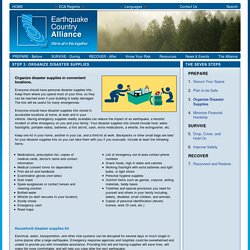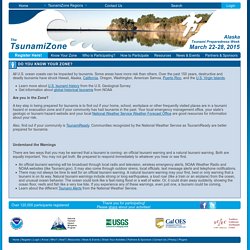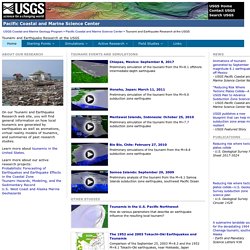

Preservation Brief 41: The Seismic Retrofit of Historic Buildings Keeping Preservation in the Forefront. Earthquake damaged building.

Photo: NPS files. David W. Look, AIA, Terry Wong, PE, and Sylvia Rose Augustus Violent, swift, and unpredictable, earthquakes result from sudden movements of the geological plates that form the earth’s crust, generally along cracks or fractures known as "faults. " If a building has not been designed and constructed to absorb these swaying ground motions, then major structural damage, or outright collapse, can result, with grave risk to human life. Although historic and other older buildings can be retrofitted to survive earthquakes, many retrofit practices damage or destroy the very features that make such buildings significant. This Preservation Brief provides essential information on how earthquakes affect historic buildings, how a historic preservation ethic can guide responsible decisions, and how various methods of seismic retrofit can protect human lives and historic structures.
Preservation Brief 41: The Seismic Retrofit of Historic Buildings Keeping Preservation in the Forefront. Purifying Your Drinking Water - HealthLinkBC. 2015 equake tsunami kitcard web. 2015 household emergency plan v03 web. Preparedbc household preparedness guide web final 2015. Earthquake Country Alliance: Seven Steps to Earthquake Safety. Organize disaster supplies in convenient locations.

Everyone should have personal disaster supplies kits. Keep them where you spend most of your time, so they can be reached even if your building is badly damaged. The kits will be useful for many emergencies. Everyone should have disaster supplies kits stored in accessible locations at home, at work and in your vehicle. Having emergency supplies readily available can reduce the impact of an earthquake, a terrorist incident or other emergency on you and your family. Keep one kit in your home, another in your car, and a third kit at work. Household disaster supplies kit Electrical, water, transportation, and other vital systems can be disrupted for several days or much longer in some places after a large earthquake.
Use and replace perishable items like water, food, medications and batteries on a yearly basis. A special note about children After the earthquake, remember that children will be under great stress. Preparedbc household preparedness guide web final 2015. 2015 household emergency plan v03 web. Problem loading page. Can It Happen Here? What are Tsunamis?

| Data We Can Use to Answer the Question | Hawai'i | Alaska | U.S. West Coast | U.S. Gulf Coast | U.S. East Coast | Puerto Rico / U.S. Virgin Islands | Other U.S. territories | References Soon after the devastating tsunami in the Indian Ocean on December 26, 2004, many people have asked, could such a tsunami happen in the United States? What are Tsunamis? Data We Can Use to Answer the Question There are three primary sources of information we can use to answer the question Could it Happen Here? Hawai'i Hawai'i has a long recorded history of tsunamis. Local tsunamis have also hit Hawai'i, primarily from earthquakes and large-scale subsidence along the south flank of Kiluea.
Alaska Because Alaska, including the Aleutian Islands, is bordered to the south by a major subduction zone capable of generating large earthquakes, Alaska has experienced a number of damaging tsunamis. Earthquake Country Alliance: Welcome to Earthquake Country! TsunamiZone.org - Do You Know Your Zone? All U.S. ocean coasts can be impacted by tsunamis.

Some areas have more risk than others. Over the past 150 years, destructive and deadly tsunamis have struck Hawaii, Alaska, California, Oregon, Washington, American Samoa, Puerto Rico, and the U.S. Virgin Islands. Learn more about U.S. tsunami history from the U.S. Geological SurveyGet information about global historical tsunamis from NOAA Are you in the Zone? A key step in being prepared for tsunamis is to find out if your home, school, workplace or other frequently visited places are in a tsunami hazard or evacuation zone and if your community has had tsunamis in the past. Tsunami and Earthquake Research. USGS Home Contact USGS Search USGS Pacific Coastal and Marine Science Center USGS Coastal and Marine Geology Program > Pacific Coastal and Marine Science Center > Tsunami and Earthquake Research at the USGS Tsunami and Earthquake Research at the USGS About Our Research On our Tsunami and Earthquake Research web site, you will find general information on how local tsunamis are generated by earthquakes as well as animations, virtual reality models of tsunamis, and summaries of past research studies.

Learn more about tsunamis in the United States. Learn more about our active research projects: Probabilistic Forecasting of Earthquakes and Earthquake Effects in the Coastal Zone Tsunami Hazards, Modeling, and the Sedimentary Record U.S. News Animations of tsunami generated by September 8 magnitude 8.1 earthquake off Mexico - USGS Pacific Coastal and Marine Science Center News USGS publishes a new blueprint that can help make subduction zone areas more resilient - USGS Featured Story Publications.
Cipr events 150814 really big one. Preview of cipr_events_150814_really_big_one.pdf.